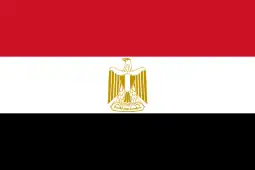Sidi Arif Mosque
The Sidi Arif Mosque (also known as Masjid Al-Arif Bellah, Arabic: مسجد العارف بالله; transliterated: Masjid al-Aarif bi Allah) is one of the largest mosques in Sohag Governorate. It was built for the first time at the 14th century and was reconstructed several times; the last one was in 1968[1] and being renewed in 1998 for the last time. At the corners of the facade are two minarets, and the roof is crowned by a dome. Inside the five-naves mosque the bases of the piers and the walls were lined with red granite. The ceiling is painted ornamentally; in its middle is an elongated light dome. The southeastern half is lit by chandeliers. At the end there is a prayer niche (mihrab) with simple ornaments and to the right of it the wooden pulpit (minbar). A Mamluk prince's cemetery is situated inside the mosque next to the cemetery of the famous Murad Bey,[2] who fled from Cairo after the Cairo Citadel genocide in the beginning of Muhammad Ali of Egypt era to settle down in Mamluk-controlled area of Jirja (now Sohag). The real name of the Arif bellah who the mosque was named after him is still mysterious to know because the term ‘arif was used by Sufi authors like Abu Abd al–Rahman al–Sulami (d. 1021) to mean "a gnostic, mystic; a seeker of marifa (spiritual knowledge)", similar in meaning to the terms salik, zahid, faqir, etc. The mosque is situated in the southern side of the city of Sohag near the main railway station and it is in the entrance of the famous old market(Souq) of Sohag, The Souk El-Qisareya .
| Sidi Arif Mosque | |
|---|---|
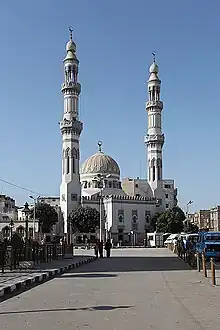 | |
| Religion | |
| Affiliation | Islam |
| District | |
| Province | |
| Ecclesiastical or organizational status | Mosque |
| Year consecrated | 14th century (the 8th century of the Islamic calendar) |
| Location | |
| Location | Sohag, Egypt |
| Geographic coordinates | 26°32′54″N 31°42′05″E |
| Architecture | |
| Type | mosque |
| Style | Islamic |
| Completed | 1968 |
| Specifications | |
| Capacity | 1500 |
| Length | 51 m (167 ft) |
| Width | 33 m (108 ft) |
| Dome(s) | 1 |
| Dome dia. (outer) | 24 m (79 ft) |
| Minaret(s) | 2 |
| Materials | Concrete |
Tourism
Every year the people of Sohag and also a big number of the people of Upper Egypt celebrate the birth day Mulid of El-Arif, and come visit Sohag in large numbers to visit the cemetery of El-Arif inside the mosque.
Gallery
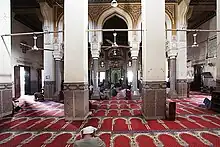 Inside the Sidi Arif Mosque
Inside the Sidi Arif Mosque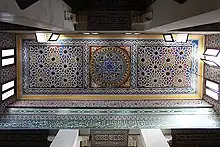 Dome of the Sidi Arif Mosque
Dome of the Sidi Arif Mosque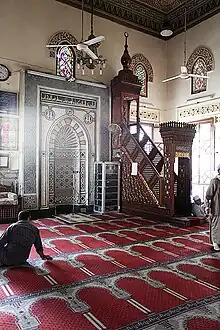 Mihrab and minbar of the Sidi Arif Mosque
Mihrab and minbar of the Sidi Arif Mosque
References
- "سوهاج ادق المعلومات عنها - بوابة الثانوية العامة المصرية".
- "إخوان سوهاج - الاثار الإسلامية بمحافظة سوهاج". Archived from the original on 2010-11-24. Retrieved 2010-08-30.
